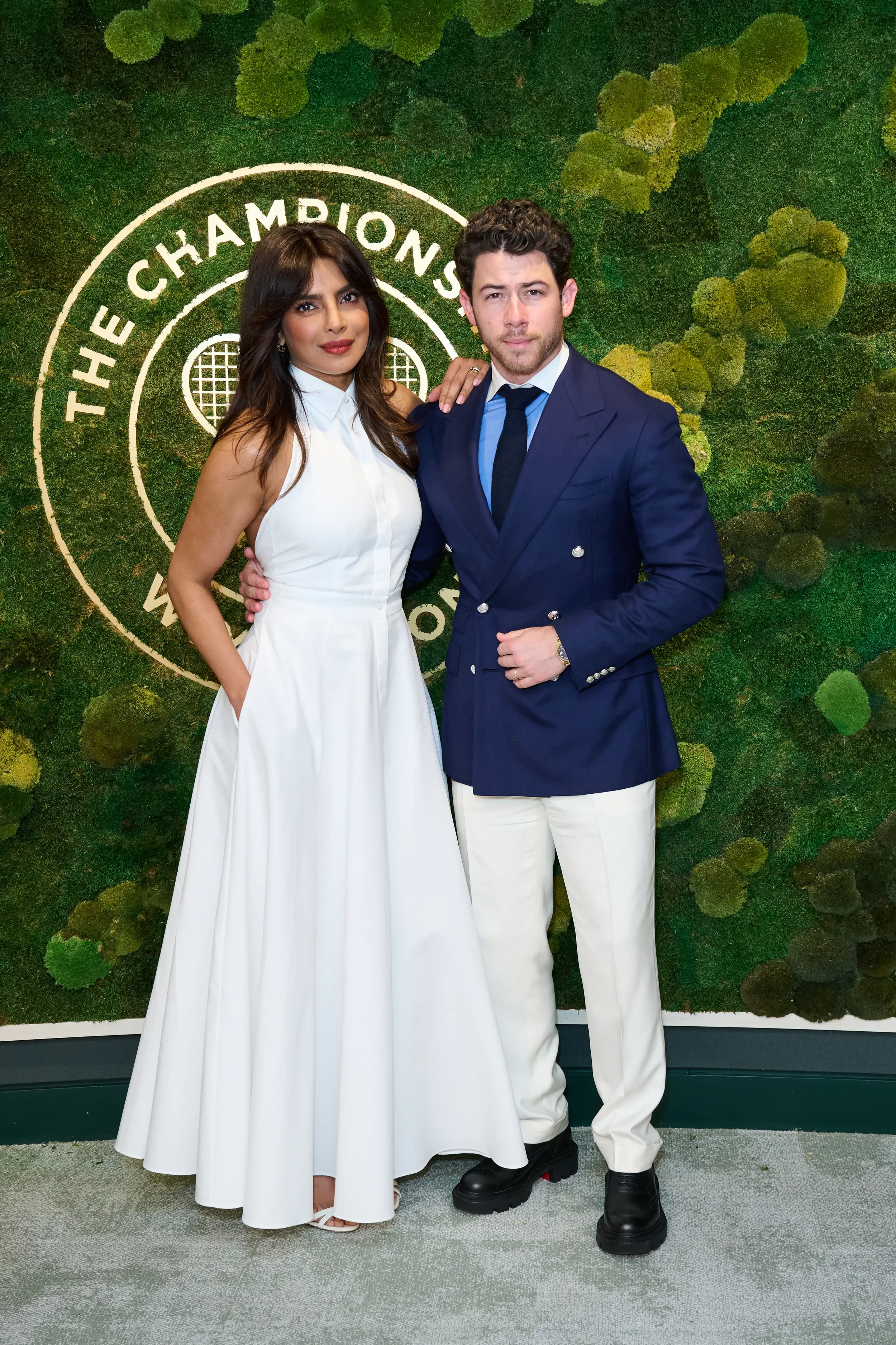Wimbledon 2025: A Slow-Luxe Perspective on Court-side Fashion
The 2025 Championships may have been ruled by tradition, but the stands revealed subtle fashion evolution. While most celebrity outfits were designer signatures, very few were intentionally sustainable—making it all the more important to read between the seams.
Featured Looks: Style & Sustainability Analysed
Daisy Edgar-Jones arrives at Wimbledon 2025. (Image credit: Getty Images)
Daisy Edgar‑Jones in Gucci
On July 13, Daisy Edgar‑Jones appeared at Centre Court in a striped cotton oxford co‑ord (camisole + midi skirt) and Gucci Bamboo 1947 raffia bag—both highly visible and trend-forward.
Slow Luxe takeaway: While Gucci is not inherently sustainable, cotton and raffia evoke craft and longevity. Unless Gucci confirms regenerative sourcing, this remains more fashion-forward than eco‑forward.
(Image credit: Photo by Karwai Tang/WireImage via Getty)
Leona Lewis in Maksu & Cult Gaïa
Leona Lewis wore a structured white Maksu midi dress and matched it with a green Cult Gaïa clutch made of durable acrylic—both chic and thoughtfully detailed.
Slow Luxe takeaway: Neither brand is known for sustainability. But the emphasis on durable design and minimalist white remains a timeless wardrobe strategy. Choose similar designs in organic or recycled fibres for a more considered impact.
Sienna Miller wearing Ralph Lauren in London on July 13, 2025 | Karwai Tang/Getty Images
Sienna Miller in Ralph Lauren
Sienna Miller embraced her boho-courtside style with a crochet crop top and pleated Ralph Lauren skirt, accented with a metallic belt and bucket bag.
Slow Luxe takeaway: Ralph Lauren is largely conventional, though pieces like crochet suggest craft. For slow luxury dance: always prefer artisan-made knits and locally crafted accessories over fast luxury brands.
Ellie Bamber in Maison Margiela | Karwai Tang/Getty Images
Ellie Bamber in Maison Margiela + Mulberry
On Day Nine, Ellie Bamber wore a Maison Margiela halter tunic with trousers, paired with a Mulberry pre-loved bag and modern sunglasses.
Slow Luxe takeaway: If the Mulberry bag was second‑hand, that is authentically slow-luxury. Up-cycling looks works—look for pieces with provenance or pre-loved angles.
Hannah Peters/Getty Images
Cate Blanchett in Giorgio Armani
At Wimbledon, Cate Blanchett was spotted in a powder-blue plaid double-breasted suit by Giorgio Armani, styled simply with a crisp shirt and modest accessories.
Slow Luxe takeaway: High-end tailoring can be sustainable if constructed to last. Seek unlikely suits in natural fabrics like linen-wool blends that age gracefully.
Jordan Peck/Getty Images | Priyanka Chopra and Nick Jonas in Ralph Lauren.
Priyanka Chopra in Ralph Lauren
Priyanka Chopra wore a crisp Ralph Lauren halter dress, and Nick Jonas coordinated in relaxed Ralph Lauren polish. They joined scores of guests stylized in RL’s white-blend pieces.
Slow Luxe takeaway: Ralph Lauren is classic—and classic equals longevity. Sustainable intent will depend on materials (organic cotton, linen) and reuse.
Slow Luxe Lessons from Wimbledon 2025
Even though few attendees wore explicitly sustainable or eco-certified brands, many looks offer opportunities for mindful interpretation.
Longevity through archives - Vintage or archival designs (like crochet, Ralph Lauren classics) encourage long-term wear and reduce waste.
Crafted accessories - Raffia, crochet, and artisan pieces elevate a look without relying on brand name. Prioritize ethically sourced materials.
Tailoring, not trends - Well-cut suiting or midi dresses in natural fabrics can last decades—seek durable textiles over fads.
Pre‑loved luxury gear - Items like second-hand Mulberry bags represent true circular fashion—encourage resale and reuse.
Material transparency matters - Without living sustainability claims (e.g. regenerative cotton, deadstock sourcing), assume traditional practice and shop mindfully.
Brands to Watch Beyond Wimbledon
If you're inspired by Wimbledon’s refined minimalism and wish to root it in sustainability, consider brands with clear eco commitments:
Priya Ahluwalia: Generates clothing from deadstock textiles and upcycled materials, rooted in storytelling and identity
Artisan labels like Elvis & Kresse: Transform waste such as firefighter hoses into luxury goods, merging industrial reuse with design
Marine Serre: Known for upcycled, deadstock-driven collections and full transparency in sourcing
Integrating garments from these designers—paired with slow-luxe staples and pre-loved vintage—aligns better with the ethics than runway statements alone.
Wimbledon 2025 was much more about aesthetic elegance than sustainable intent. Yet it overflowed with cues—white linen dresses, refined tailoring, crochet textures, raffia accents—that could be translated into slow-luxury fashion through more ethical choices.
As Slow Luxe advocates, our practice is not just to admire—but to adapt. Swap fast luxury for thoughtfully sourced parallels; choose handcrafted archives over logo-lust; invest in pieces that last emotionally and materially.
That’s how court-side elegance becomes a lasting intentional wardrobe.







